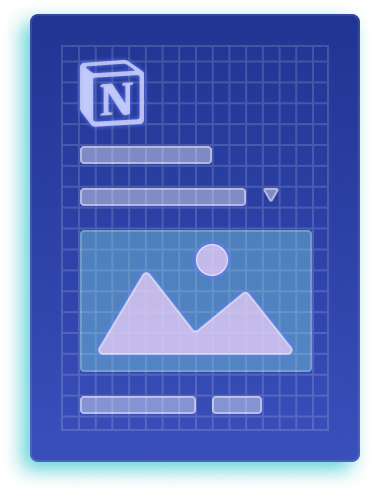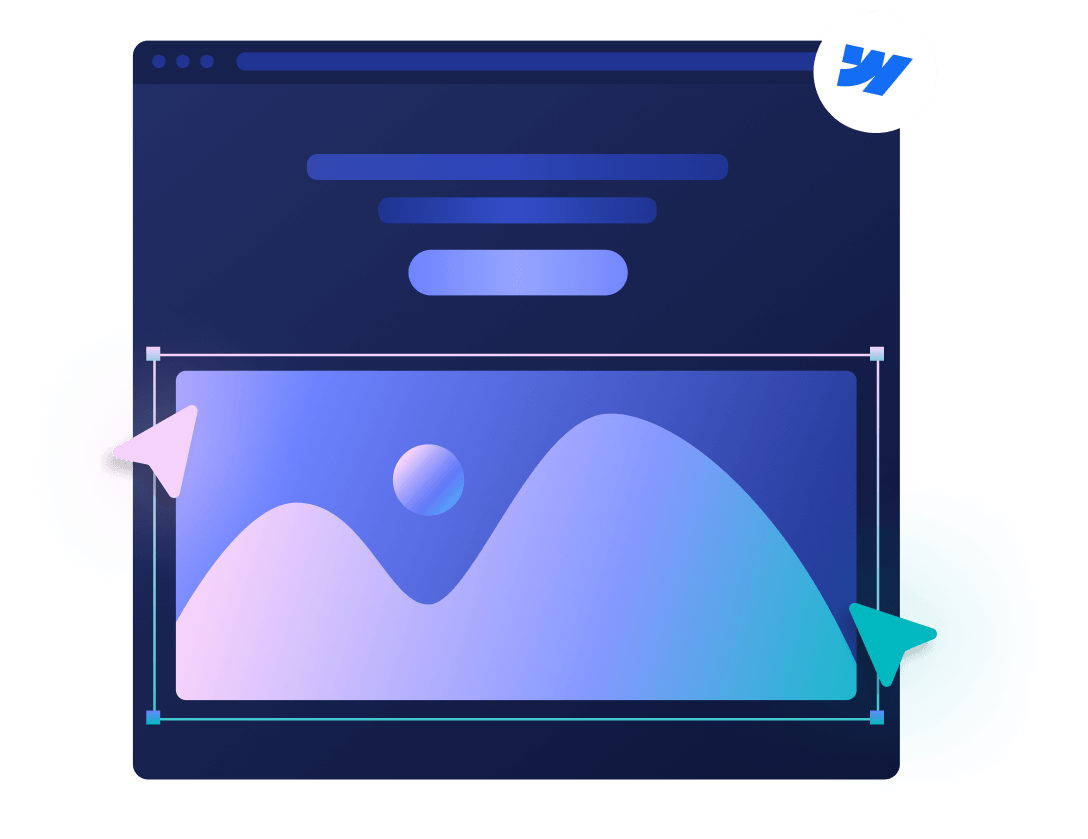.png)
Micro-Content vs. Long-Form: When to Use Each for Maximum Impact
Content has become a non-negotiable asset for businesses to thrive. However, knowing what length to cap them can be quite challenging. Too long, and your readers will bounce. Too short, and most will switch to a competitor’s comprehensive guide.
In a study conducted by SEMrush and cross-reviewed with Clearvoice’s mapping, long-form posts perform much better. Based on statistics, they yield 3-6x more traffic and 4x more social shares compared to micro-content.
So, does that mean your social media posts should be 3000+ words? Or should your product teasers be a laundry list long?
In this article, we’ll help you understand both content forms and when to actually use them for the best results.
{{cta}}
What is micro-content and examples?
According to Gary Hemming, Owner & Finance Director at ABC Finance, “Micro-content means short, easily digestible pieces of content designed for quick consumption and engagement. We’re talking about less than 300 words of text that readers can scroll through in a few seconds to a minute or watch in about a minute if it’s a video.”
This could be a product summary, teaser paragraph, routine DIYs, a short product demo, a meme, a GIF, an infographic, social media advertisements, or even a social media poll. Micro-content is designed to capture attention and drive quick engagement, thus making it ideal for platforms like TikTok, Instagram Reels, Twitter/X, and YouTube Shorts.
However, they barely offer in-depth value and can not be used to explain or provide comprehensive knowledge on a subject matter. Still, their ability to draw the needed focus from an attention-deficit audience makes them valuable for several use cases. We’ll discuss these use cases later.
It is important to clarify that micro-content is not the same as short-form content. Short-form content can range from 300 to 1200 words, with slight range variations depending on your audience.
What is long-form content and examples?
John Grant, Founder & CEO at Premier Bidets, says, “Long-form content is an extensively researched piece with detailed sections highlighting the what, why, where, when, and how-tos of a subject. This includes several minutes or hours-long YouTube videos to at least 1200-3000+ worded articles. Some blog posts can even be as long as 5000 to 10,000 words, but that’s overdoing it already.”
“Primarily, long-form content aims to educate an audience and provide almost all the needed information in one read. It also focuses on establishing authority instead of creating awareness. You’re telling your target audience you know what you’re talking about and positioning yourself as a go-to solution for their questions”, Chris Aubeeluck, Head of Sales and Marketing at Osbornes Law, adds.
However, long-form content is not for everyone, especially as our attention span gradually fades into oblivion. According to APA, the average human attention span is around 47 seconds, with a median of 40 seconds. A typical reading speed used by Medium is 265 words per minute. So, a long-form piece of 3000 words is around 11 minutes.
Still, a growing number of people prefer it to clips or shorts when looking for solutions to a problem rather than entertainment. And that explains why articles with greater than 3000+ words have more engagement.
Micro-Content vs. Long-Form: Detailed differences
To understand more, let’s compare their differences.
Micro-content
- Length: Short (10-60 sec, <300 words)
- Engagement level: Quick engagement, not sustained
- Usual Platforms: TikTok, Instagram Reels, Twitter/X, Snapchat
- Purpose: Brand awareness, quick interactions
- Consumption Time: A few seconds to 1 minute
- Format: GIFs, memes, short videos, reels, quick posts
- SEO Impact: Low (except for hashtags and trends)
- Storytelling Depth: Limited, optimized for quick message delivery
- Target Audience: Short attention span, mobile users
- Conversion Potential: Good for impulse actions (clicks, shares)
- Brand Messaging: Snappy, direct, visually appealing
- Content Shelf Life: Short-lived, trend-based
- Metrics to Measure Success: Views, likes, shares, comments
Long-form content
- Length: Long (5+ min, 1200+ words)
- Engagement level: Deeper and sustained engagement
- Usual Platforms: Blogs, YouTube, Podcasts, LinkedIn
- Purpose: Thought leadership, education, lead generation
- Consumption Time: Several minutes to hours
- Format: Articles, webinars, documentaries, ebooks
- SEO Impact: High (SEO-optimized blogs, YouTube ranking)
- Storytelling Depth: Comprehensive, optimized for detailed storytelling
- Target Audience: Engaged readers, business leaders, researchers, deep learners
- Conversion Potential: Strong for trust-building and high-value conversions
- Brand Messaging: Detailed, informative, persuasive
- Content Shelf Life: Long-lasting, evergreen potential
- Metrics to Measure Success: Dwell time on page, bounce rate, conversions
When to use micro-content for maximum impact
Micro-content is primarily built to fill in the minimum attention span of your audience. And that makes them useful for the following:
Creating quick brand awareness
Maryanne Fiedler, Director of Marketing at Psychic Source, says, “When creating awareness, you need something brief and straight to the point with a captivating click-to-action at the end (CTA). This includes captions for advertisements, new stock alerts, flash sales promotions, teaser videos, influencer shoutouts, limited-time offers, trending hashtags, and summarized, eye-catching visuals to maximize engagement and reach.”
Demand-gated promotions
Micro-content also comes in handy during demand-gated promotions like time-sensitive deals, discounts, etc. This is especially important during holiday seasons like Black Friday and Valentine’s. You can use micro-content for giveaway announcements on social media platforms.
Social media engagement
An average social media user spends over two hours daily on social platforms scrolling hundreds of posts or videos on their feeds. What they need is content for quick consumption before they move on to the next. And micro-content works best here.
It could be anything snackable, from DIY videos that last a minute to business memes, polls, and quizzes, or a random but professional snitch like Hubspot did below.

Product teasers or launches
Nike created a teaser campaign for the release of the Air Jordan 1 "The Last Dance" sneaker with several short-form videos (under 60 seconds) showcasing snippets of the shoes in action, legendary moments of Michael Jordan, and behind-the-scenes clips from the design process. This was so effective and brief that it sent the average price up a few moments after launch.

User-generated content
To build awareness and your repository of social proof, you can ask social media followers and previous customers to post bite-sized content of them using your product. These micro-pieces can be reposted, with permission, to boost your online credibility and authority
When to use long-form content for maximum impact
Since long-form pieces are lengthier, they are not a good fit for creating awareness. Instead, use them for the following:
In-depth storytelling or brand messaging
Roman Zrazhevskiy, Founder & CEO at MIRA Safety, says, “Storytelling involves connecting a number of dots together till they make sense and pass your intended message. So, a 300-word or 1-minute content won’t do. When you want to communicate your brand values, depict product journey, launch cause-related campaigns, publish documentaries, and other pieces that require storytelling, use long-form.”
Educational content
This is usually in the form of blog posts and longer-than-DIY tutorial pieces, especially on YouTube. Your audience wants you to break down everything as much as possible instead of giving a summary. Other examples include Hubspot Academy courses, Coursera’s guides, case studies, comprehensive product demos, and whitepapers for industry leaders.
SEO-driven content
Long-form blog posts generate more traffic and engagement than short and micro-pieces. First, search engines like Google prioritize pages with comprehensive information on a subject matter as it helps readers find what they need. Secondly, long-form content keeps readers on the page longer, increasing dwell time. So, if your goal is to build on-page SEO for your website, you need long-form content.
Thought leadership content
Thought leadership pieces often target C-level executives. While these groups of audience do not have much time on their desk, they appreciate detailed, expert-vetted, and accurate content that proffers organizational solutions. If your audience falls in this circle, then long-form should be your go-to.
Nurturing and conversion pieces
“Top-of-the-funnel (TOFU) content like comprehensive guides and Middle-of-the-funnel (MOFU) content like comparison posts are educational and thus deserve more length. Conversion content such as case studies are often used for bottom-of-the-funnel (BOFU) leads and can vary in length, from short to long-form, depending on your audience”, Peter Čuček, Owner at Tuuli, says.
Detailed product information or reviews
For ecommerce businesses, micro-content for product description is enough since you’re working with hundreds of products. But if you’re offering just one or a few tens of products, you’ll need to provide a detailed long-form description per each product, most times on a different page. Marques Brownlee (MKBHD) on YouTube reviewing gadgets, Wirecutter’s in-depth product comparisons, and Salesforce featuring real-world success stories all embrace long-form content.
Beyond the use cases: what does your audience think?
Murtaza Oklu, Owner of OMO Transfer, encourages knowing when or when not to use each form of content. But advises, “You should consider your audience since they’re the ones consuming whatever content you roll out. Monitor sentiment and engagement rate for each content length.”
“Also, track your marketing channels—email, social media platforms, webpages, ads, etc—with Google Analytics or other analytical tools. Analyze your reports to see which content length performs best. For instance, micro-content has peak engagement on social media, but platforms like LinkedIn seem to favor long-form over micro-pieces”, he continues.
Combine your analytics report with the use cases you’ve learned so far and decide on which content length to embrace per channel.
{{cta}}
Wrapping up
Micro- and long-form content both have their perks. The former works well for capturing attention and building quick awareness. On the other hand, long-form content focuses on building audience knowledge, establishing subject authority, and converting leads through thorough nurturing.
You can use micro-content for demand-gated promotions such as holiday deals, time-sensitive specials, and discounted offers. They are also effective for generating social media engagement, product teasers or launches, and acquiring UGCs.
Long-form works well for storytelling and detailed product journeys, educational blog posts and guides, and SEO-driven content. You can also use long-form if you need to build yourself as an authority in the niche, nurture and convert leads, and provide detailed product information or reviews.





The 2025 Playbook for Website Customer Acquisition
After helping 200+ clients skyrocket their conversions, we've created an in-depth marketing guide for turning websites into sales drivers.
.png)

.png)

in mind?
Talk with our team and learn how your ideas can become digital experiences.
.png)
.svg)





-min.png)
.png)
.png)

.png)
.png)



-min.png)









.svg)

.png)
.png)
.webp)
.svg)


